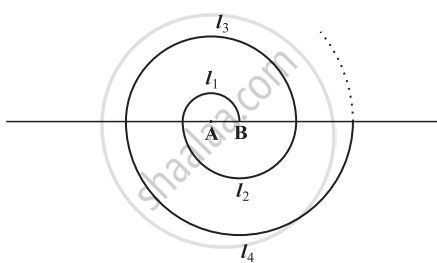Advertisements
Advertisements
प्रश्न
Determine the nth term of the AP whose 7th term is -1 and 16th term is 17.
उत्तर
Let a be the first term and d be the common difference of the AP. Then,
a7 = -1
⇒ a + (7-1) d = -1 [ an = a + (n-1)d]
⇒ a+ 6d = -1 .................(1)
Also ,
a16 = 17
⇒ a + 15d = 17 .................(2)
from (1)and (2), we get
-1-6d+15d=17
⇒9d = 17 + 1 =18
⇒ d= 2
Putting d = 2 in (1), we get
a+6×2=-1
⇒ a = -1-12=-13
∴ an = a+ (n-1)d
=-13 +(n-1) × 2
=2n -15
Hence, the nth term of the AP is (2n - 15).
APPEARS IN
संबंधित प्रश्न
Find the 9th term from the end (towards the first term) of the A.P. 5, 9, 13, ...., 185
Find the sum of all natural numbers between 250 and 1000 which are exactly divisible by 3
In an AP given a = 3, n = 8, Sn = 192, find d.
A spiral is made up of successive semicircles, with centres alternately at A and B, starting with centre at A of radii 0.5, 1.0 cm, 1.5 cm, 2.0 cm, .... as shown in figure. What is the total length of such a spiral made up of thirteen consecutive semicircles? (Take `pi = 22/7`)

[Hint: Length of successive semicircles is l1, l2, l3, l4, ... with centres at A, B, A, B, ... respectively.]
Which term of AP 72,68,64,60,… is 0?
Find the sum of first n even natural numbers.
The sum of first seven terms of an A.P. is 182. If its 4th and the 17th terms are in the ratio 1 : 5, find the A.P.
Find the sum of all members from 50 to 250 which divisible by 6 and find t13.
The sum of first ten natural number is ______.
The first term of an AP of consecutive integers is p2 + 1. The sum of 2p + 1 terms of this AP is ______.
